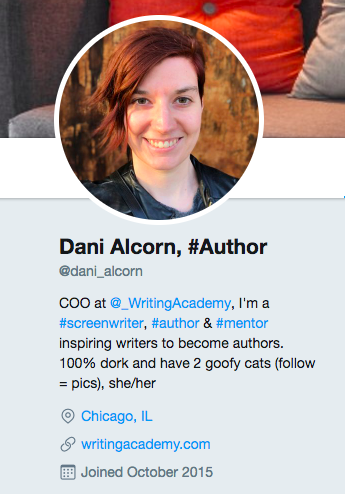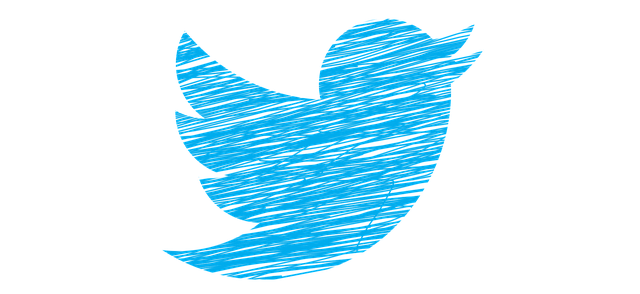Since my last post about Twitter I’ve learned A LOT!
Hashtags
Hashtags make the Twitter-world go round. A hashtag is something that “tags” a post. It’s preceded by the pound symbol (#) and cannot include any spaces.
You can search for hashtags on Twitter and also use them to help people find you.
I’ve added #Author to my name so I’ll pop up in a people search for authors. I’ve also added hashtags to my bio for similar reasons.
My new bio also utilizes active verbs to describe what I do and emphasizes followers can expect semi-frequent cat pictures. Here it is:
“COO at @_WritingAcademy, I’m a #screenwriter, #author & #mentor inspiring writers to become authors. 100% dork and have 2 goofy cats (follow = pics), she/her”
(N.B. In case you’re curious about the she/her at the end, it’s polite to include your preferred pronouns on social media.)

Following and Followers
My strategy for following agents was a good place to start but I realized I also need to follow people who will be interested in my work and my upcoming book. Again, I used hashtags to search for #screenwriters, #authors, #writers, etc. and followed people who posted interesting stuff.
Also, the “follow-back” is important on Twitter. This is when you follow someone who follows you. Some people found me and started following me. I followed them back and discovered they post great stuff!
Trending Hashtags
A good way to get your posts noticed is to tweet about stuff relevant to hashtags that are trending. You can see them in a sidebar on Twitter. If a hashtag is trending, that means a lot of people are currently talking about it.
Sometimes it’s a current event. Last week, #PolarVortex and #PolarVortex2019 were trending a lot. I live in Chicago (where the windchill was -55 F!!!) so I had some cool (literally) photos and videos to contribute.
Other hashtags cycle around every week, like #TBT (throw back Thursday) and #FridayFeelings. The most useful I’ve discovered so far is #MondayBlogs, which was started by @BadReadheadMedia (an excellent resource for all things book marketing).
Not Wasting Your Time
I should have foreseen this, but once I got on Twitter it was hard to get off. They’re very good and luring you in with notifications!
Plus, I’m also juggling several different social media feeds for myself and Writing Academy. I started cycling through them/getting distracted by notifications as they came in on each channel and not getting much writing/work done.
The solution turned out to be simple. It’s called Hootsuite.
Hootsuite is an online service that helps you manage your social media channels all in one spot and also lets you plan out all your Tweets/Facebook posts ahead of time on a calendar (it even posts them for you automatically).
I’m using the free version, which has so far been completely adequate for my needs. Of course, there are limitations. You can only manage three social media accounts and put 30 “posts” on your calendar at once. For me, that’s more than enough right now.
This service lets me sit down and plan out a week’s worth of social media posts at one time. I think there are some even more sophisticated features (possibly paid) as well.
Note: I did have to specifically Google “Hootsuite Free” to find that plan. Understandably, they do a pretty good job of hiding that plan on their website!
I did a little research about when social media posts tend to do best. I take this into account when planning out my posts.
Social Media Posting Guidelines: Optimal Times to Schedule Posts
(all times are Central)
Generally tweet any day between 10AM to 12PM- Best times:
- Friday: 9-10AM
- Generally,
post 10AM-3PM on weekdays - Best times:
- Wednesday: 12PM, 2PM
- Thursday: 1PM, 2PM
- Generally,
post Tuesday-Friday 9AM-6PM - Best times:
- Wednesday: 3PM
- Thursday 5AM, 11AM, 3-4PM
- Friday 5AM
Note: We’re not actually on Instagram yet but I’m sure it’s only a matter of time… Stay tuned!

